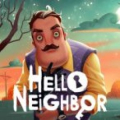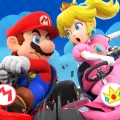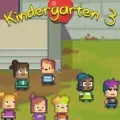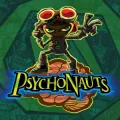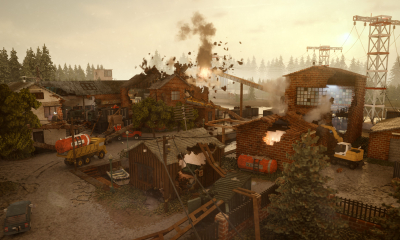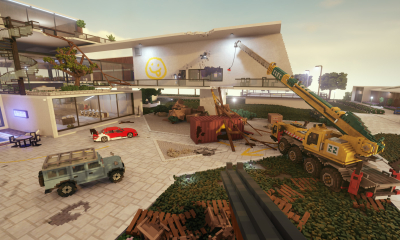In a gaming landscape that often values high-fidelity graphics and cinematic narratives, Teardown emerges as a refreshing endeavor that deviates from convention. Developed by Tuxedo Labs, Teardown is a game that challenges players to think creatively and approach problems with a blend of careful planning and destructive innovativeness. It is a game where structures are not permanent, and the environment is not just a backdrop but a blank canvas waiting to be manipulated by the player's will. The introduction of such a title into the gaming market has offered a wholly original experience that beckons the curious and inventive to delve into its voxelized world and leave its mark among its destructible landscapes.
A Deconstruction of Gameplay: The Heart of Teardown
Teardown's central gameplay mechanic is hinged upon a physics-based environment where players can deconstruct almost anything in sight to accomplish their goals. Each mission is akin to a high-intensity heist where preparation meets opportunity. Players equip themselves with a variety of tools, ranging from sledgehammers to explosives and even vehicles, each serving as an instrument in their symphony of demolition. These missions require the player to strategize the order of objectives, as triggering alarms set off a countdown, demanding a swift and efficient route through the wreckage they've wrought.
Challenges within the game often involve creative problem-solving and testing the limits of the fully destructible environments. The structural integrity of the buildings plays a crucial role, enticing players to assess their approach. Will a support beam trigger a cataclysmic collapse, or will it create the perfect passageway? This cerebral component provides a deeply satisfying dynamic to the gameplay, fostering a palpable sense of accomplishment when plans come together flawlessly.
The game's compelling soundtrack – a mixture of rhythmic beats and electronic tunes that perfectly complement the calculated chaos. There is no voice acting to narrate the player's journey; instead, the game allows the symphony of destruction and the subtle soundtrack to speak for themselves, enhancing the focus on the environment and player action.
The visual art style of Teardown is a bold embrace of voxel graphics, which harkens back to a simpler time in digital artistry while imbuing it with modern realism and complexity. This style serves a dual purpose: it bolsters the computational feasibility of the game's extensive destructible environments and bestows a unique aesthetic charm.
While discussing Teardown, one cannot ignore the cultural perceptions and influences surrounding the game. Its sandbox environment and emphasis on players' creativity draw parallels to classics such as "Minecraft". However, Teardown forges its distinct identity by leaning heavily into physics simulation and a more mature, goal-oriented structure. Its legacy may well be defined by its innovative use of destruction as both a mechanic and art form, inspiring future titles to explore the potential of truly interactive and moldable game worlds.
Admitting Imperfections: A Candid Look at Teardown's Shortcomings
The specialized nature of its gameplay might not appeal to all. For those seeking a more traditional narrative or direct engagement with characters, Teardown may fall short. The game also demands a certain level of patience and willingness to experiment, which might prove frustrating for those desiring more immediate gratification or action-packed sequences. Also, some players may find the need to constantly shift strategies to avoid redundancy and keep the game feeling fresh.
Conclusion
Teardown has carved out a distinctive niche in the hearts of its players. It has been widely received with admiration and enthusiasm, praised for granting an unparalleled level of freedom within its destructible realms. Through word-of-mouth and glowing reviews online, the game has amassed a community that revels in sharing their most intricate demolitions and gravity-defying exploits.
User impressions often highlight the satisfaction derived from executing a perfectly orchestrated plan to navigate through obstacles. As though they were digital architects of their own fates, players take pride in their creative approaches to seemingly insurmountable challenges. Nevertheless, some express desires for a more robust storyline or deeper character development, but these are generally secondary to the praise for the game's primary focus on interaction and creativity.
Teardown is a prime example of taking one strong concept and implementing it with dedication and attention to detail. Its legacy is still a work in progress, but if its impact could be predicted, it would be a confirmation of the idea that in the world of gaming, sometimes the most compelling stories are not the ones we are told but the ones we carve out of the world with our own hands and imagination.
Trending games
-
![Fortnite logo]() Fortnite
Epic Games
Fortnite, developed by Epic Games, emerged from relative obscurity to become a gaming sensation that transcended entertainment and permeated popular...
Fortnite
Epic Games
Fortnite, developed by Epic Games, emerged from relative obscurity to become a gaming sensation that transcended entertainment and permeated popular...
-
![Grand Theft Auto V logo]() Grand Theft Auto V
Rockstar Games
Grand Theft Auto V is the latest part of the famous GTA series developed by Rockstar. The game was initially...
Grand Theft Auto V
Rockstar Games
Grand Theft Auto V is the latest part of the famous GTA series developed by Rockstar. The game was initially...
-
![Minecraft logo]() Minecraft
Mojang
Minecraft is a sandbox construction game, made by the Swedish company Mojang. Minecraft is created in a 3D environment and...
Minecraft
Mojang
Minecraft is a sandbox construction game, made by the Swedish company Mojang. Minecraft is created in a 3D environment and...
-
![Roblox logo]() Roblox
Roblox Corporation
Roblox is a sandbox game platform, where users can create game modes and servers and enjoy the community-created content. It...
Roblox
Roblox Corporation
Roblox is a sandbox game platform, where users can create game modes and servers and enjoy the community-created content. It...
-
![Geometry Dash logo]() Geometry Dash
RobTop Games
Geometry Dash is an action platformer game developed by RobTop Games. It was initially released on PC in 2013 and...
Geometry Dash
RobTop Games
Geometry Dash is an action platformer game developed by RobTop Games. It was initially released on PC in 2013 and...
-
![Poppy Playtime logo]() Poppy Playtime
MOB Games
In the ever-expansive domain of survival horror games, few have risen as meteorically or as unsettlingly as "Poppy Playtime." This...
Poppy Playtime
MOB Games
In the ever-expansive domain of survival horror games, few have risen as meteorically or as unsettlingly as "Poppy Playtime." This...
-
![Gacha Cute logo]() Gacha Cute
A Whole New World of Adorable Characters and Addictive Gameplay Awaits!
Hey there, fellow lovers of all things cute and...
Gacha Cute
A Whole New World of Adorable Characters and Addictive Gameplay Awaits!
Hey there, fellow lovers of all things cute and...
-
![Gacha Nox logo]() Gacha Nox
Imagine stepping into a world adorned in warm and soft pink hues, buzzing with customization options galore–welcome to the stand-out...
Gacha Nox
Imagine stepping into a world adorned in warm and soft pink hues, buzzing with customization options galore–welcome to the stand-out...
-
![Garten of Banban 4 logo]() Garten of Banban 4
An Immersive Dive into Garten of Banban 4
Garten of Banban 4 offers a refreshing twist to the unconventional gaming...
Garten of Banban 4
An Immersive Dive into Garten of Banban 4
Garten of Banban 4 offers a refreshing twist to the unconventional gaming...
-
![Hole.io logo]() Hole.io
Immersing in the World of Hole.io
Stepping into the arena of Hole.io as an experienced gamer, I have come to...
Hole.io
Immersing in the World of Hole.io
Stepping into the arena of Hole.io as an experienced gamer, I have come to...


